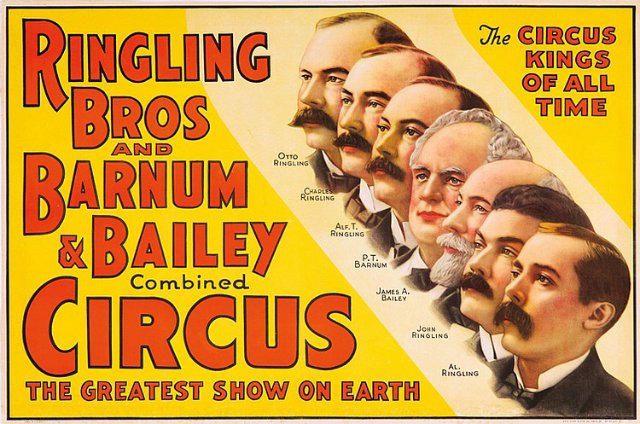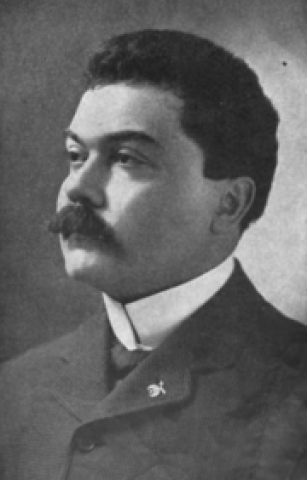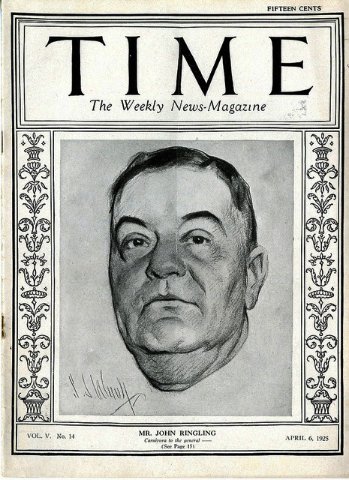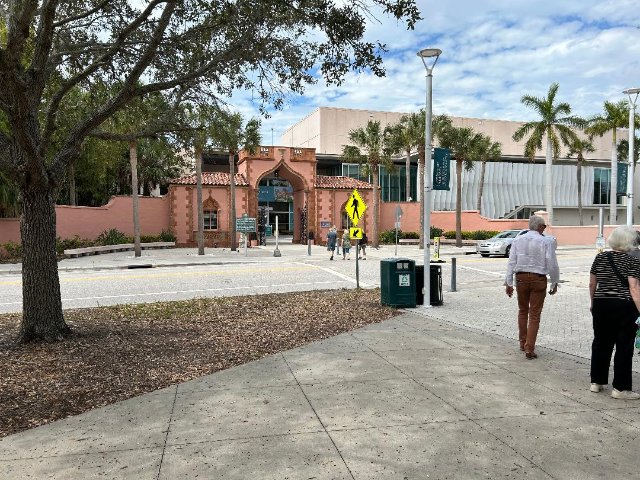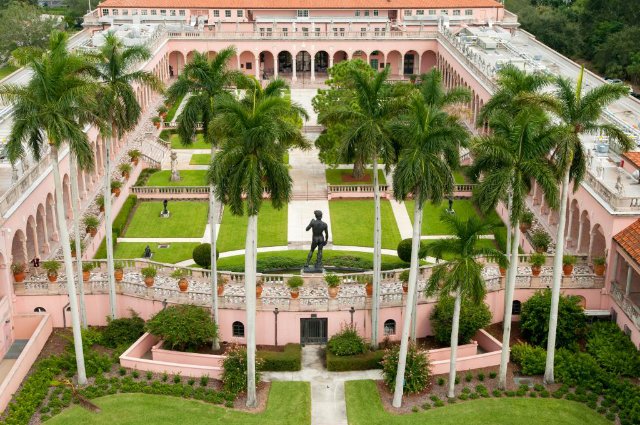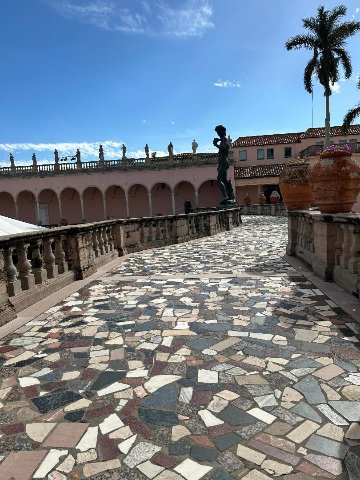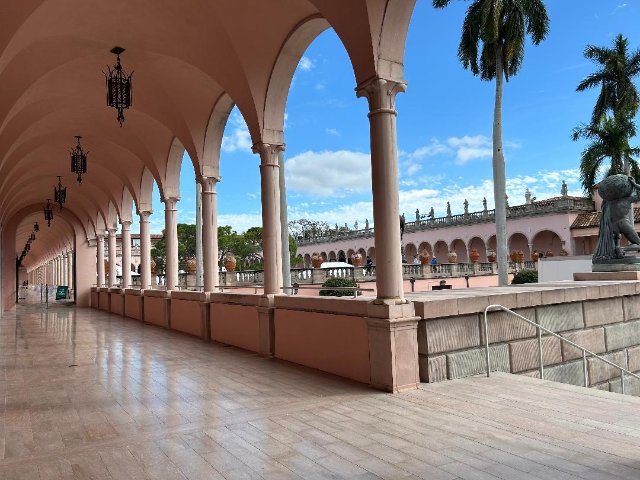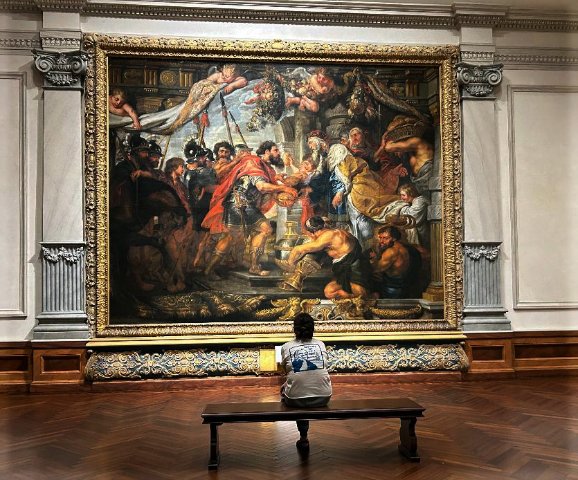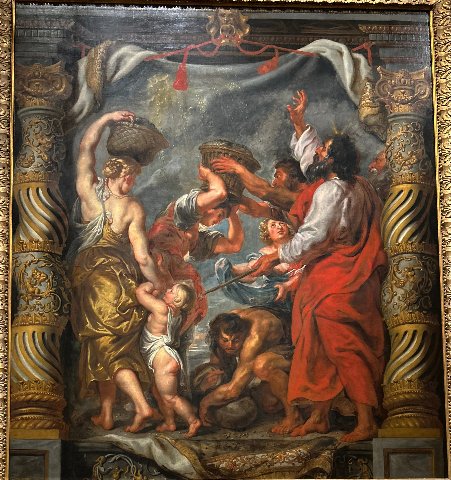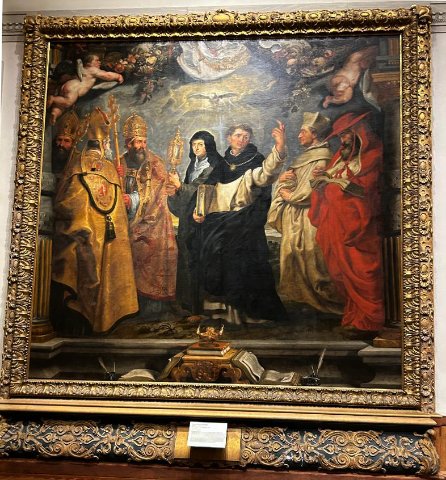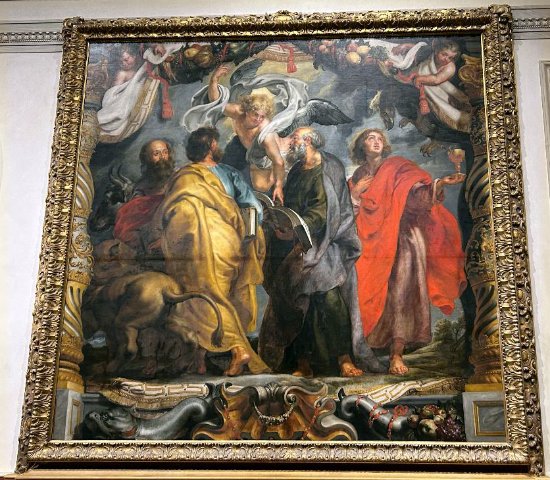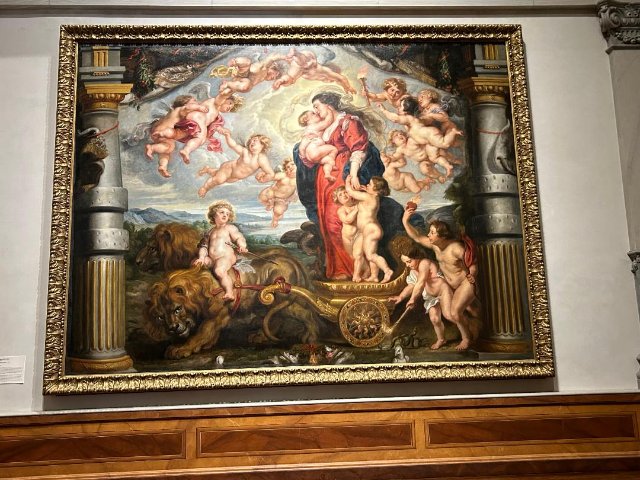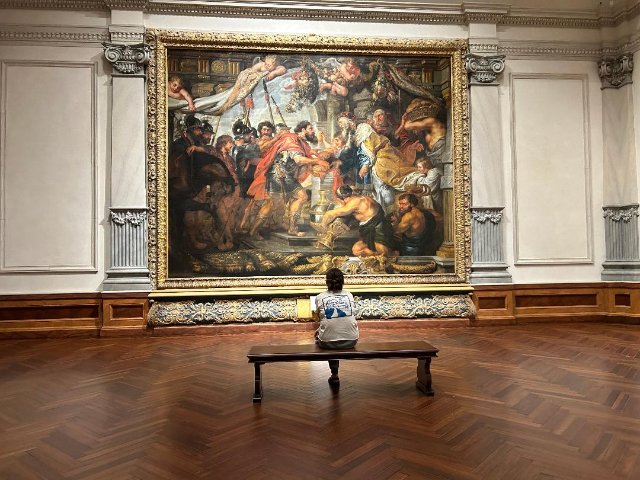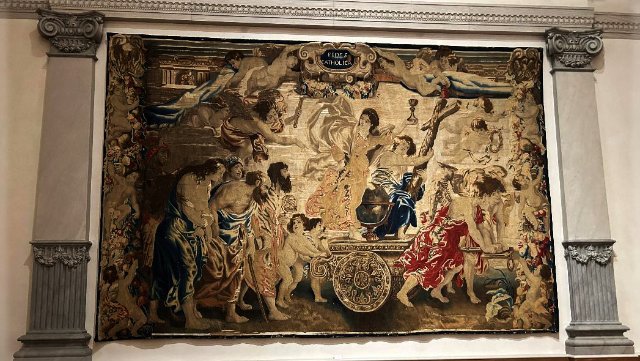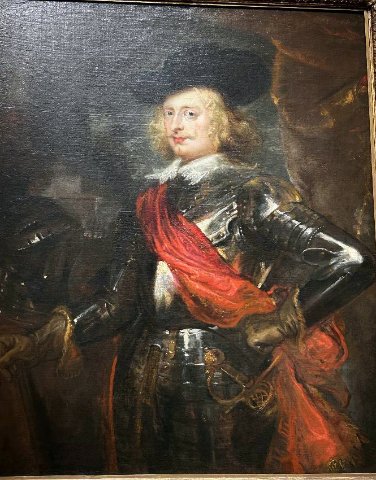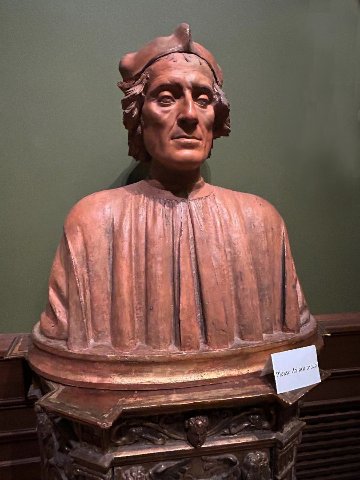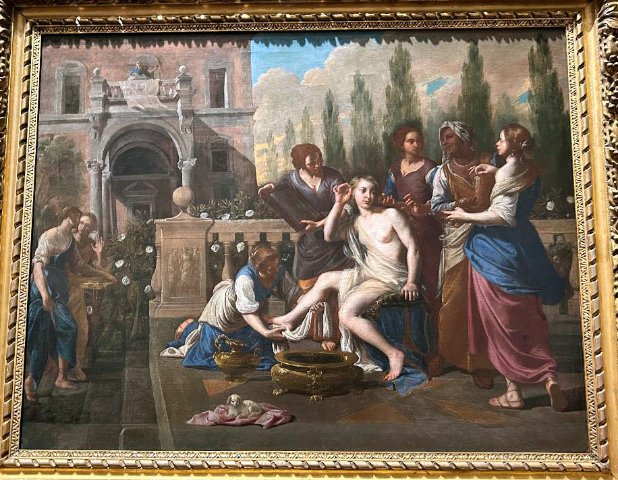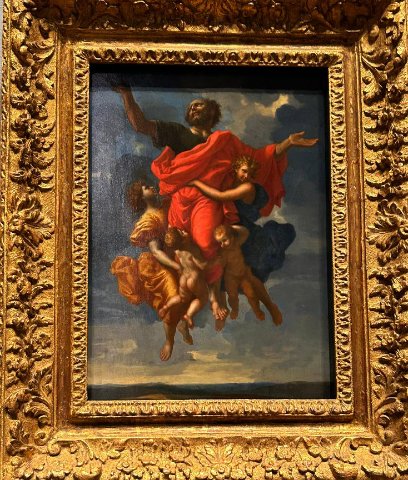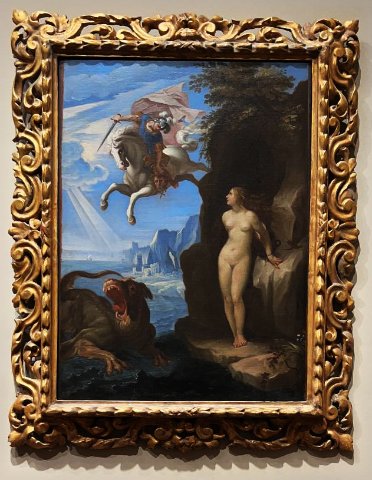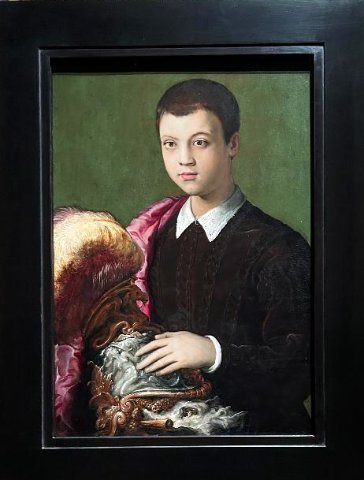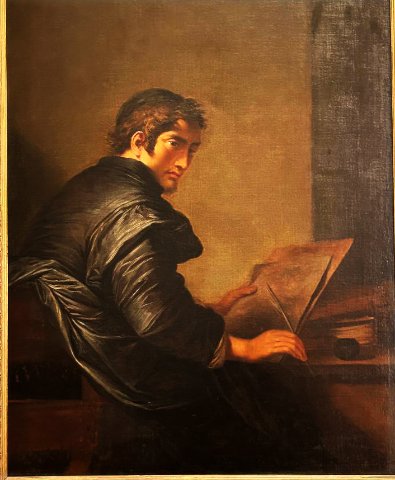Ringling Museum in Sarasota, Florida
A Three Ring Circus of Art
By: Charles Giuliano - Mar 22, 2024
The
During our visit we focused on the permanent collection. With more time one might also take in the
This abundance of riches was launched when literally and metaphorically the circus came to town.
John Nicholas Ringling (May 31, 1866 – December 2, 1936) was an American entrepreneur who is the best known of the seven Ringling brothers, five of whom merged the Barnum & Bailey Circus with their own Ringling Bros.World’s Greatest Shows to create a virtual monopoly of traveling circuses. In addition to owning and managing many of the largest circuses in the
He died on 2 December, 1936, in
The devastating Spanish Flu epidemic of 1918 prohibited touring while maintaining the circus with virtually no income. There were investments that went south and loans to be paid. The Great Depression further diminished assets. He died with only $311 in the bank. He willed his
Largely through cruelty to animals legislation, after 146 years, the circus ended in 2017.
In 1905 John married Mable Burton who died in 1929. Later me married Emily Haag Buck in 1930 and divorced her in 1936.
In 1909 John and Mable began spending winters in
In order to recruit acts for the circus John and Mable traveled extensively in
The era of Robber Barons ended with the graduated income tax enacted by Theodore Roosevelt. The 16th amendment was ratified in 1913. Due to generous exemptions and deductions, less than 1 percent of the population paid income taxes at the rate of only 1 percent of net income. Eventually, that impacted the uber rich and maintenance of their life style and mansions. With the Great Depression properties were abandoned and poorly maintained.
Ringling’s
A conceit of the ruling class was to flaunt their status by filling mansions with European masterpieces. Art history and connoisseurship were less advanced than today. With deep pockets the American collectors purchased what caught their fancy. There was healthy competition for prized works.
Both the
Between 1920 and 1930 Ringling acquired more than 500 paintings. He was advised by the dealers Julius Bohler, Joseph Duveen and the scholar Max J. Friedlander. The collector often acted on his own initiative.
The ancient art collection has 2,000 Greek, Roman, Etruscan, and Cypriot pots, glass and sculptures. In 1928 he acquired 2,200 objects from the Cesnola collection of the Metropolitan Museum of Art. The museum includes extensive Chinese and Indian works.
In 1926 Ringling purchased two period rooms from the
In the reception area of the museum we enjoyed a meal on a terrace overlooking a pond and view of the
The walk to the museum led us on a lush path and trees festooned with Spanish moss. We sat for a while next to a pond with cranes.
The impact of the collection is front-loaded by the enormous first gallery hung with a tapestry and several larger than life paintings from the Triumph of the Eucharist series by Peter Paul Rubens (1577-1640) and his workshop.
The instinctive approach is to describe them as cartoons commissioned by the Spanish princess and ruler of the Spanish Netherlands, Isabella Clara Eugenia, the daughter of King Philip II of
Ringling purchased four of the canvases from the Duke of Westminster in 1926 and designed Gallery 2 especially to house them. The fifth canvas, on view in Gallery 1, was purchased by the museum in 1980. Gallery 1 also displays a tapestry from the late 17th century which repeated one of Rubens’s designs. The designs from the Triumph of the Eucharist series continued to be copied in tapestry by multiple weaving houses after the original set was made for
In The Defenders of the Eucharist, c. 1625, oil on canvas, his patron is represented as Saint Clare. She stands in the center of the composition flanked by saints and popes including
The Gathering of Mana, c. 1625, depicts Moses, at the right, with a hand pointing to heaven. From which falls the mana, a form of divine bread, to feed the Israelites during their 40 years of wandering in the desert. The mana conflates with the Christian Eucharist.
The Four Evangelists, c. 1625 depicts Matthew, Luke, Mark and John. The Triumph of Divine Love, c. 1625 represents Charity, the personification of love, standing in a chariot surrounded by putti.
The largest of the Ringling Rubens paintings is The Meeting of Abraham and Melchizedek, c. 1625. Abraham returns from victory over four kings. The high priest offers bread and wine, a surrogate of the Eucharist, to the general and his exhausted army. It is the most complex and engaging of the museum’s works by Rubens.
Not related to the Eucharist cycle is The Departure of Lot and His Family from Sodom. The mural-scaled painting was also acquired by Ringling.
The tapestries were displayed on special feast days or holidays in the convent. The series relates to the practice of the Eucharist. It is the sacrament of the Holy Communion when during mass the bread and wine become the body and blood of Christ.
Through research it is no longer believed that the five epic paintings were cartoons for tapestries. They did not serve that function. Cartoons were traditionally works on paper sent to the factory for replication. An example of this is the set of Raphael’s cartoons for the Sistine Chapel tapestries. Shown in low light, they are hung in the
The Rubens paintings were displayed in Isabella Clara Eugenia’s palace in
Five are at The Ringling, and two are in the collection of the Louvre in
Given the level of competition for masterpieces it was a coup for Ringling to secure these seminal works. They anchor the collection providing depth and impact. These magnificent paintings would be the pride of any museum.
They represent the best and worst of the Baroque style which can be overwrought in its torsions of flesh and convoluted massing of figures. Rubens was admired for excess. It is also challenging to identify his hand and touch among those of his workshop. It is know that some of the studio staff specialized in aspects of the works. Rubens provided the design and finishing touches. In this factory-like process he was able to fill major commissions.
He was in such demand and so well traveled in the European courts that he is alleged to have served as an ambassador and spy. That notion has been dismantled as an artist, even at this level, was regarded as a worker by the court. While his practice entailed rubbing shoulders with royalty arguably little rubbed off.
In these large studio works it’s challenging to identify the hand of the artist. Not so for the museum’s riveting portrait of Cardinal-Infante Ferdinand (also known as Don Fernando de Austria, Cardenal-Infante Fernando de España and as Ferdinand von Österreich; May 1609 or 1610 – 9 November 1641).
The spectacular painting was a brilliant museum acquisition by director Chick Austin in the 1940s after the death of the founder in 1936.
Ferdinand/ Fernando was a Spanish and Portuguese prince (Infante of Spain, Infante of Portugal (until 1640)), Governor of the Spanish Netherlands, Cardinal of the Holy Catholic Church, Archduke of Austria, Archbishop of Toledo (1619–41), and a general during the Thirty Years’ War, the Eighty Years’ War, and the Franco-Spanish War. He is largely considered to be the best Spanish general of the time; as well, one of few generals to be undefeated.
Compared to the mélange of hands in Rubens’ five tapestry related paintings, we have an autograph work. The brush work and glint of armor draw us to this singular and stunning work, a
Another Hapsburg, Philip IV King of Spain, C 1625, is depicted by the court painter, Diego Velazquez. He painted many portraits of the royal family, including Las Meninas. The Ringling portrait is relatively early and the first to represent him in armor.
Among the 10,000 plus objects in the collection there are choice works on view.
I was arrested by a Florentine terra cotta portrait. According to an inscription on the base of the bust on the left, the sitter is meant to be Francesco Guicciardini, a prominent Florentine politician and historian who lived between 1483 and 1540. His principal achievement was the Storia d’Italia, a comprehensive history of Florentine political life between 1492 and 1534.
The panorama The Building of a Palace, c. 1515-1520, by Piero di Cosimo (1461/62- c. 1521) is charming and interesting on several levels. It is composed with enticing linear perspective which depicts the architecture in process. There are vignettes that convey the means of construction. In medieval yeoman terms we see a Sawyer and Pitman creating lumber from a large timber.
In the Mannerist style a portrait of an aristocratic youth by Francesco Salviati (1510-1563) is prized. The youth rests a hand on a helmet depicting symbols related to Cosimo di Medici.
A tall, narrow Agony in the Garden by Jacopo Bassano (1510-1592) was fascinating for its relationship to the night-lit works of Caravaggio (1571-1610). This is the embryo of the dramatic lighting of the Baroque style. The museum’s collection includes a curious knock off of Caravaggio’s seminal Supper at Emmaus by an unknown follower.
The works of Artemisia Gentileschi (1593-1651) are powerful on their own terms as well as for her seminal status in accounts of feminist art history. It was surprising to encounter an intriguing painting labeled, workshop of. That raises the intriguing notion that she was famous enough to have followers.
Of great interest is Salvator Rosa (Italian, Arenella (
Unfortuately, we did not have time to explore new spaces for contemporary art and The Chao Center for Asian Art, comprising three main gallery spaces, presents over 3000 years of history and culture from across the Asian continent. The Ting Tsung and Wei Fong Chao Gallery features highlights from The Ringling’s extensive collection of Chinese ceramics, South and Central Asian sculpture, as well as objects from
We did, however, encounter a courtyard taken over by James Turrell, born 1943. A large square in the ceiling has been removed. The walls of the space are covered with creeping vines. The aperture determines the play of light depending on time of day and atmospheric conditions. This trope is conveyed in numerous museums including MASS MoCA in the Berkshires.
There are also contemporary works by Alexander Calder, Philip Guston, Frank Stella, Robert Rauschenberg, Philip Pearlstein, John Chamberlain, Louise Nevelson, Jackie Ferrara, Cindy Sherman, David Hockney, Barbara Kruger and others.
While today the museum complex is pristine that hasn’t always been the case.
John Ringling willed his property and art collection, plus a $1.2 million endowment, to the people of State of
Dr. Laurence J. Ruggiero was director from 1985 to 1992. In 1989 the Circus Gallery was renovated. In, 1991, the restored John and Mable Ringling Museum of Art reopened.
Even after prevailing in court, the Florida Department of State did little to manage the endowment or maintain the property. The local community failed to support the museum. By the late 1990s Ca’ d’Zan was falling apart. Ringling’s initial $1.2 million endowment had grown to just $2 million.
The State of
In January 2007, a $76-million expansion and renovation of the

